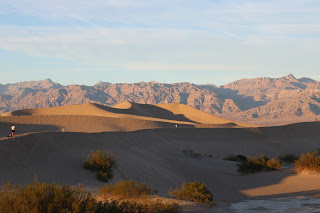Requirements
- For this project you will take 5 Photos for each Classic Theme – 25 photos total
- You will edit all 25 photos using the techniques listed below - we will be learning these techniques over the next week and a half
The 5 Classic Themes:
1. Portrait
- Take in Vertical Format
- Remember to use care in cropping – always crop in between two joints, never at a joint
- Help your model feel comfortable by taking candid photos or giving them clear direction on how they should be posing – you are the one seeing what the photograph looks like, tell them how they should move to make the best, most flattering portrait
2. Landscape
- Take in Horizontal Format
- Remember the rule of thirds – the horizon line should sit on either the thirds or two thirds mark – it depends on what your focal point is.
- If the subject is the sky (interesting clouds, sunset or sunrise) the sky should take up 2/3rds of the picture
- If the subject is the landscape, that should take up 2/3rds
- Avoid overly busy landscapes - if the land has busy texture - consider breaking it up by using close-up foreground objects, or by having the land only take up 1/3 of the photograph
3. Still Life
- Take in Horizontal Format
- You arrange objects on table or other flat surface – design your own composition
- Set up Lighting – either direct light source or diffused lighting work well. You can use the sun as your light source, just make sure you think about how the light is hitting your subject – pay attention to shadows and highlights
- We will be going over some lighting techniques - consider using some of these lighting techniques for your still lives
4. Action
- Take in Vertical or Horizontal Format – It depends on what direction the moving object is going
- If the object is moving side to side – horizontal format
- If the object is moving up and down – vertical format
- Create active space – have a moving object going into the frame
5. Macro
- Take in vertical or horizontal format
- Up close picture focusing on textures and surface quality
- Subject should take up at least 2/3rds of the frame
- Little to no background noise – try to keep the background as simple as possible – blur it out when necessary
_________________________________________________
Editing:
1 Dream-Like image for each CTOP*
1 Antiqued image for each CTOP*
1 Black and White image for each CTOP*
1 Double Exposure image for each CTOP*
1 Editing technique of your choice for each CTOP*, I will be posting a list of resources to search for your free choice editing techniques
For example - you will have 1 portrait edited in the dream-like technique, 1 portrait edited in the antique technique, 1 portrait in B&W, 1 portrait as a double exposure, and 1 portrait edited in a technique of your choice. You will do the same for each of the other CTOPs as well.
Editing:
1 Dream-Like image for each CTOP*
1 Antiqued image for each CTOP*
1 Black and White image for each CTOP*
1 Double Exposure image for each CTOP*
1 Editing technique of your choice for each CTOP*, I will be posting a list of resources to search for your free choice editing techniques
For example - you will have 1 portrait edited in the dream-like technique, 1 portrait edited in the antique technique, 1 portrait in B&W, 1 portrait as a double exposure, and 1 portrait edited in a technique of your choice. You will do the same for each of the other CTOPs as well.
*CTOP = Classic Theme of Photography





